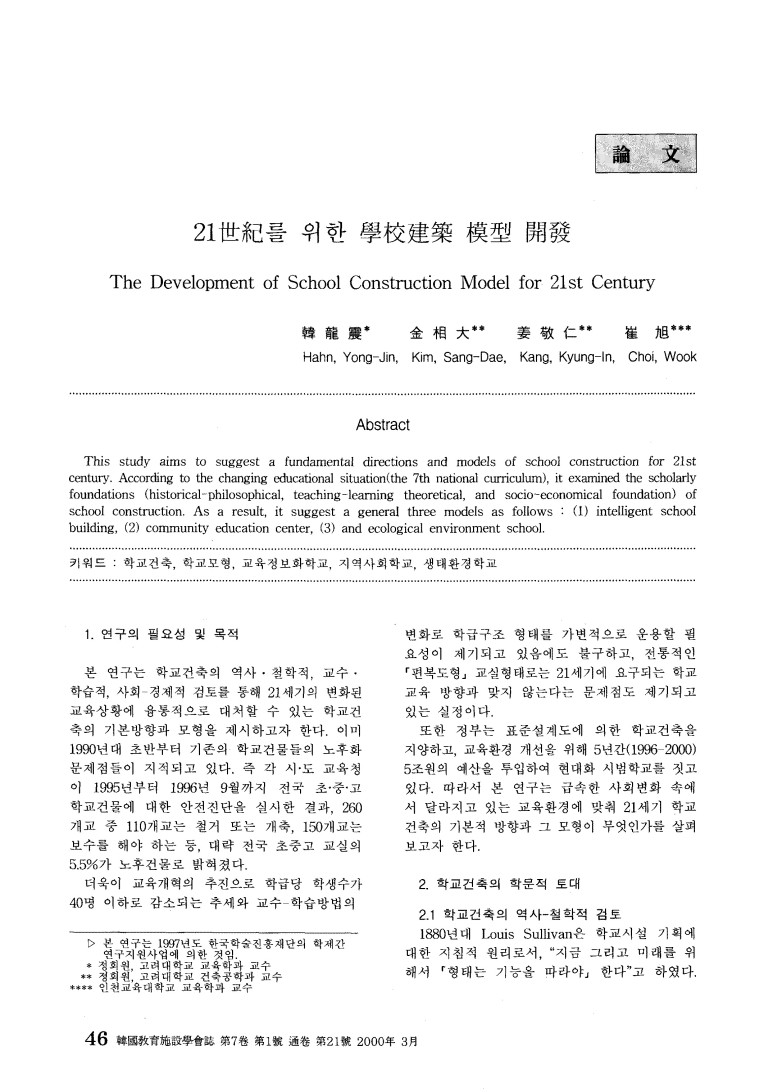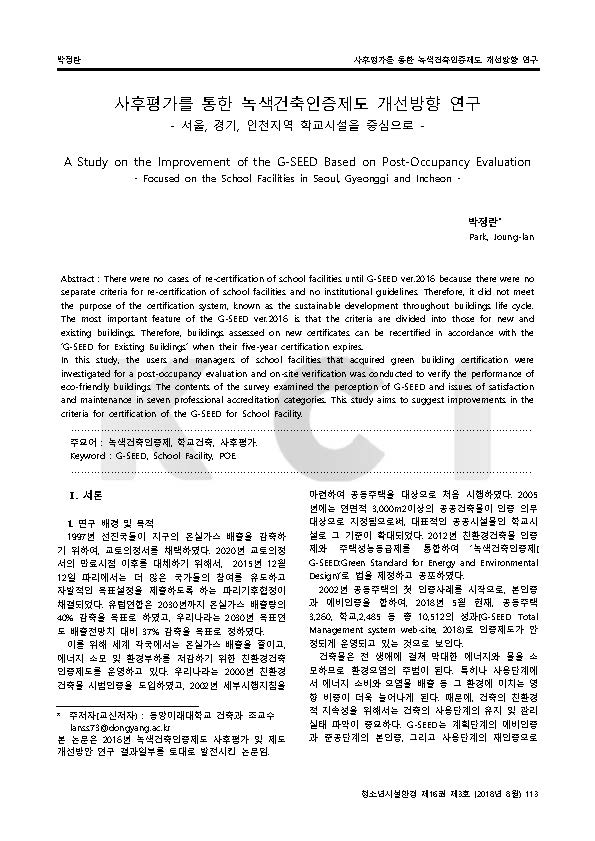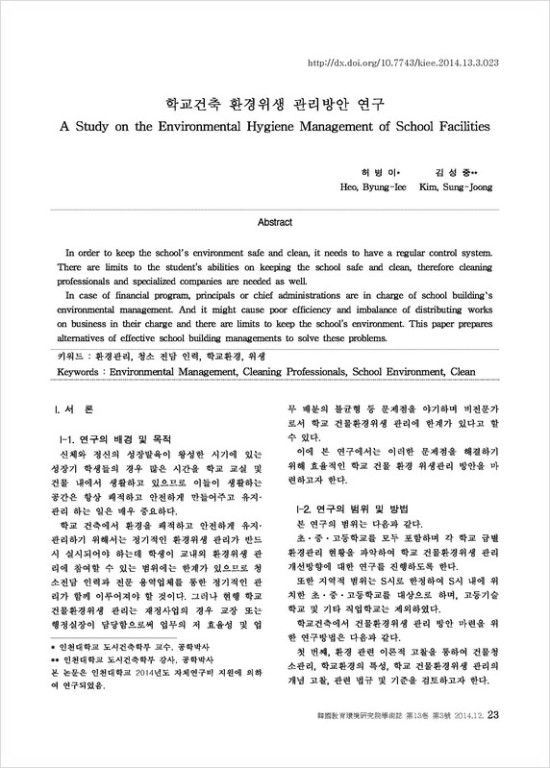21세기를 위한 학교건축 모형 개발

21세기를 위한 학교건축 모형 개발 The Development of School Construction Model for 21st Century 저자 한용진, 김상대, 강경인, 최욱 학술지정보 교육시설:한국교육시설학회지 발행정보 한국교육시설학회 2000년 자료제공처 국회도서관 KISTI 주제분야 교육 > 교육학 <초록> This study aims to suggest a fundamental directions and models of school construction for 21st century. According to the changing educational situation(the 7th national curriculum), it examined the scholarly foundations(historical-philosophical, teaching-learning theoretical, and socio-economical foundation) of school construction. As a result, it suggest a general three models as follows : (1) intelligent school building, (2) community education center, (3) and ecological environment school. <목차> Abstract=46,47,1 1. 연구의 필요성 및 목적=46,47,1 2. 학교건축의 학문적 토대=46,47,1 2.1. 학교건축의 역사-철학적 검토=46,47,3 2.2. 학교 건축의 교수-학습적 검토=48,49,3 2.3. 학교건축의 사회-경제적 검토=50,51,2 3. 학교건축에 대한 현황분석=52,53,1 3.1. 국내 학교건축의 사례=52,53,2 3.2. 선진국의 학교건축 사례=53,54,2 4. 21세기를 ...


